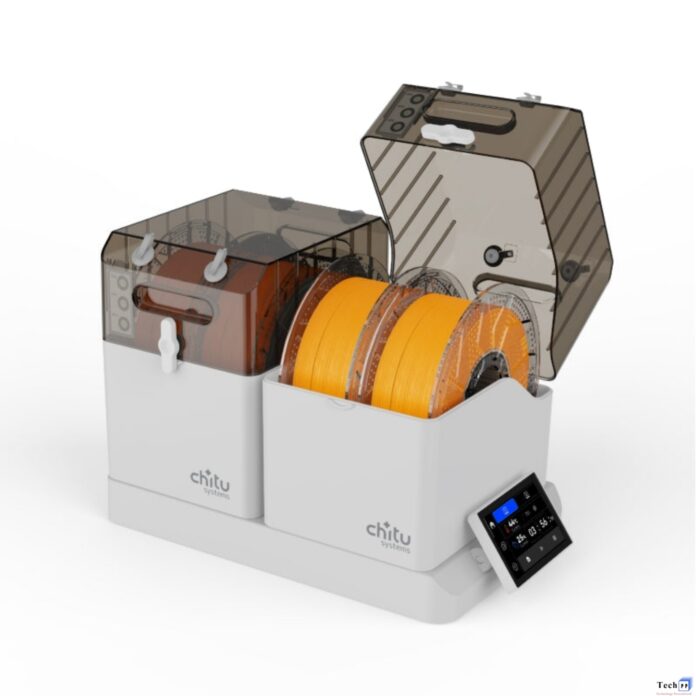The slightest mistake can cost you your whole 3D print, making it look deformed. In 3D printing, consistency and precision are the most important things. No matter what expensive printer you buy or how in-tune it is with your results, the filament dryer is still the central point that can make or break your 3D print.
If there is something wrong with your filament, it can cause issues like bubbling, stringing, and poor layer adhesion. These issues are caused by moisture, and if that is something that enters your filament, you are only setting yourself up for failure.
In this guide, we are covering the ultimate guide to the best filament dryer in 2025, what specifications and features you should look out for, and most of all, what filaments you should buy that are bang for your buck.
Why Do You Need a Filament Dryer?
Filaments like PETG, ABS, Nylon, and PLA are known to be hygroscopic, meaning that they absorb moisture from the air. Since the humidity season is coming, it only takes a few days for a filament to show signs of moisture. This can cause stringing and oozing, crackling sounds during the printing process, brittle or weak layers, and even inconsistent print quality.
As a person who is printing 3D items, you might not want this to happen to you. But the cure is simple. You can use a filament dryer that can restore dryness in your filament, making it the optimal temperature that you would want. This way, you can print at a professional level.
Filament Dryers: How Do They Work?
A filament dryer is like a low-heat oven or a dehydrator in a sense. When you put filaments into it, it creates a consistent head over time that ultimately removes moisture without melting the filament. That is done by creating the perfect heating environment for the filaments by adding temperature controls, sensors, and timers to help you in the drying process.
There are some filament dryers that even let you print directly from the dryer itself. Here are some of the key features to look out for in a filament dryer in 2025.
1. Temperature Control
Different filaments have different drying temperatures. For example, PLA’s perfect dry temperature would be 40-45°C, while PETG would be somewhere in between 60-65°C. So, you should at least get a dryer that offers precise temperature control so you can easily dry different ranges of filaments.
2. Sensors
Specifically, the humidity sensor is quite important when you are trying to dry your filament. When there is a built-in hygrometer, you can easily monitor the moisture levels in real time. This feature is perfect for knowing when you should stop the drying process or start it while leaving out all the guesswork.
3. Multi-Spool
If you use multiple filaments for your 3D printing needs, then there are filament dryers that have multiple chambers where you can dry more than one filament at a time. Perfectly designed for multi-material printing setups, some filament dryers are built differently.
4. Print While Drying
The one thing that makes filament dryers different from a dehydrator or a dehumidifier is that some of them have a print while drying option. You can simply feed the filaments to your 3D printer from inside the dryer, and your 3D prints will come out lush.
How? Well, inside, they maintain the temperature while outside, and they are fed into your 3D printer to be printed at a relatively higher quality. In short, it fixes all the issues we have with humidity.
The Best Filament Dryer of 2025: Chitu Systems FilaPartner E1
The Chitu Systems FilaPartner E1 is one of the best options in 2025 and is available on Chitu Systems. This filament dryer is perfect for enthusiasts, professionals, and hobbyists who are looking to 3D the best possible quality prints.
But what sets it apart from other filament dryers in today’s world? Let’s talk about all the features that it offers.
Dual Chamber Drying System
The FIlaPartner E1 comes with a dual-chamber design, meaning you can dry up to four filament spools at the same time. This is perfect for people who are into multi-material prints, print farms, or people who want to prepare multiple filaments in advance. The chambers can operate independently, giving you more control over various materials and their drying.
Humidity Control
You get a built-in control panel that not only lets you set your ideal temperature but also lets you see humidity in real-time. Therefore, you don’t have to guess the right time to stop the drying process because you are getting all the controls and information on screen.
Hence, you won’t be overheating or underheating your filaments, ensuring that the moisture is thoroughly removed. The display itself is high-quality, and you can use it without having to worry about anything.
Wide Compatibility with Filaments
Different filaments dry at different temperatures. There is PLA, PETG, TPU, Nylon, PC, and a lot more. The FilaPartner E1 supports a plethora of temperatures and can dry up to 70°C. This is a perfect example of a common 3D filament.
You can easily dry filaments that are more prone to moisture without causing damage or ruin.
Final Verdict
The FilaPartner is the perfect example of what a great filament dryer in 2025 looks like. If you want more 3D printer accessories, you can check out Chitu Systems and their wide catalog of high-quality accessories.


